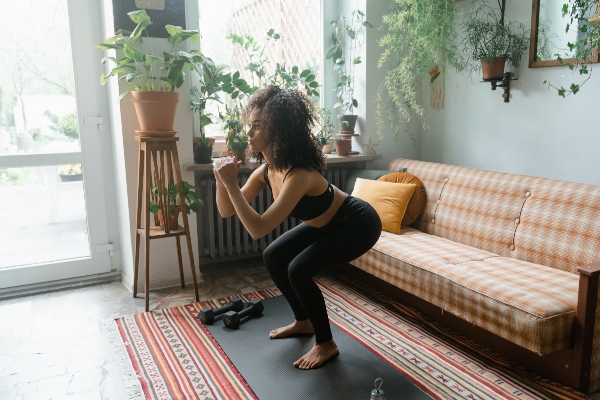Maximizing the assets of your gluteus maximus
By Shannon Sutton, CPT
What to do? What to do? Is your gluteal region reaching its maximum intended capacity, or is it disappearing? Not all hope is lost! Cardiovascular exercise, a healthy, well-rounded diet, regular massage and the proper exercise regimen can help restore your “fanny” back to its once youthful self.
The gluteal muscles are the three muscles that many of us are sitting on right now. Continuous pressure and disuse (too much “sitting around”) can lead to atrophy which can result in a round, saggy rump. Whether you would like to minimize or maximize your “assets,” the following are some tools to help you achieve your goals:
Gluteal extension and release:
Begin by lowering your upper body to about 35 degrees from parallel with the floor. Engage your glutes and lower back while raising up until parallel with (or slightly higher than) floor. Slowly return to starting position. Repeat for 15 repetitions. Note: Cease exercise if lower back begins to tighten or you feel any pain.
Floor bridge:
Lie on your back with feet planted just beyond your glutes – hips width and parallel. Slowly raise your torso, beginning with your tailbone, and curl up until your spine is elevated and your body weight is rested between your heels and your shoulders. Lower your gluteal/abdominal region a couple of inches, and rise back to starting position. Keep your abs tight and focus on the gluteal contraction. Repeat. Note: Placing a medicine ball or Pilates ring between your knees will provide a compound workout. Maintain the “squeeze” throughout.
Extension lunges:
Perform as you would a normal lunge (with your knee directly over your foot and weight through your front heel). Upon standing, raise your rear leg and squeeze your glutes. Be sure to keep your hips square, abs tight and chest up. Perform 15 to 25 repetitions, and repeat with alternate leg.
Step-ups:
Place your left foot on a properly sized step or bench (about 12 to 15 inches). Make sure your knee is no higher than your hip. With your chest up and your abs tight, transfer your weight to your left foot, and step up (pressing your weight through your heel). Extend right leg up and back while contracting your glutes. Repeat 15 to 25 repetitions with your left leg, and then switch to your right. Note: Dumbbells may be used for additional weight.
These are just a few of the numerous exercises that are beneficial to the behind. Running, climbing stairs or bleachers, bicycling, squats, leg presses, and other exercises are also great! Keep in mind that the actual shape of the gluteal muscle mass is not only a result of the muscle itself but also of the overlying adipose (or fat) tissue which gives it its rounded shape. Therefore, I want to once again stress the importance of the nutritional and cardiovascular factors. Good luck and train hard!
Shannon Sutton is an independent certified personal trainer. Her certifications include ISSA, NASM, APEX and Reebok. She has invested years in helping individuals reach their health, fitness and wellness goals. Contact her at (210) 722-3962.






